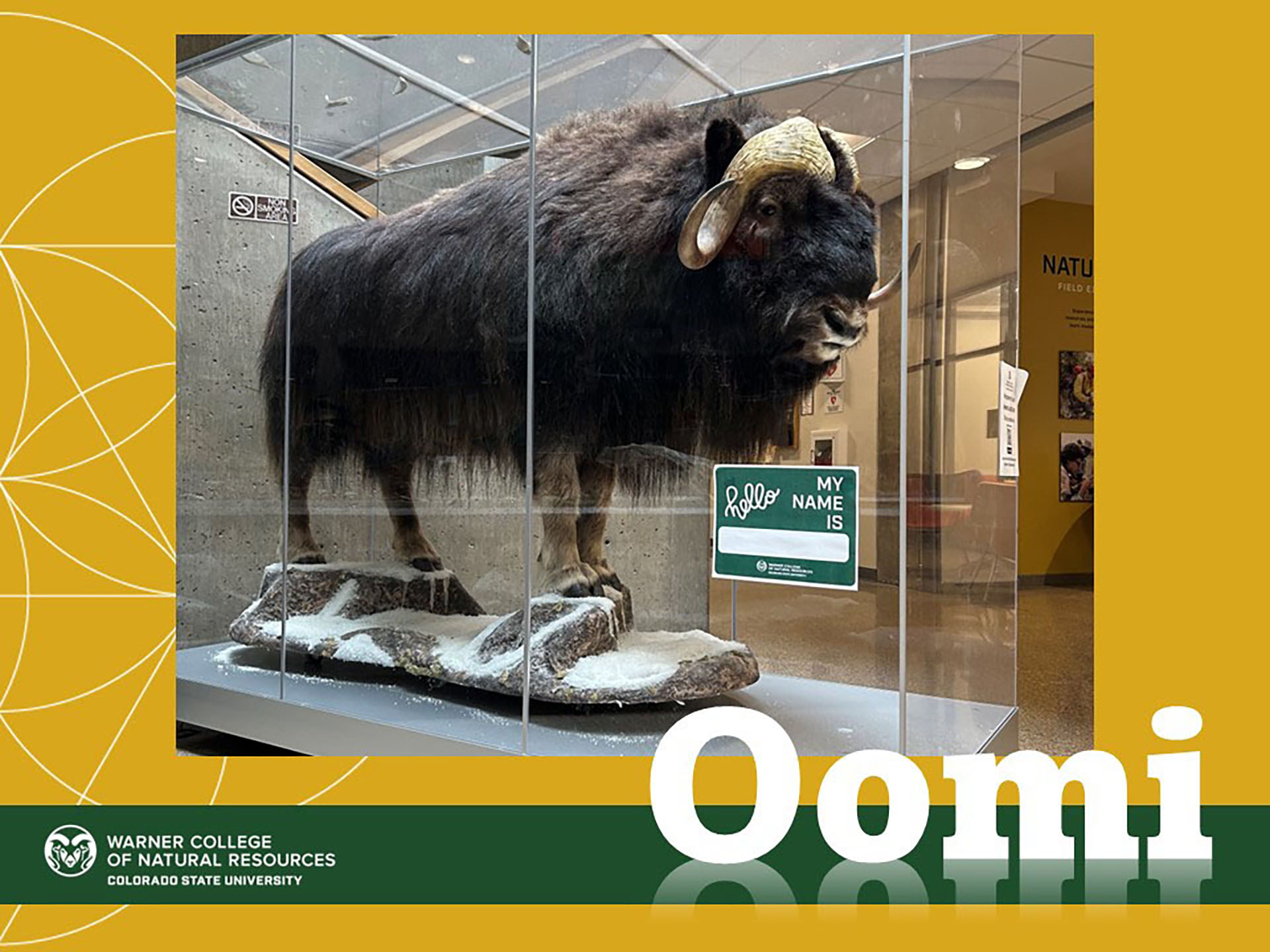After months of receiving name suggestions for the musk ox mount that now resides in the atrium of the Michael Smith Natural Resources building, the newest member of the Warner herd has a name:
Drumroll, please…
It’s Oomi!
Origin of the name
Over winter break, when the musk ox mount moved from its original home in the Wagar building to the atrium, a call for name ideas was put out to the Warner community; and the community delivered. Students, alumni, faculty and staff submitted names that had some sort of tie to natural resources. After reviewing all of the submissions, the Musk Ox Naming Committee unanimously agreed on one name, which was revealed at the annual Warner College Natural Resources Days Student Awards Reception on April 17.
Two students, Natalie Buchholz and Gunnar Tribelhorn, submitted a variation of the same name: Oomingmak, or “bearded one,” which is the Iñupiat name for musk oxen. The Iñupiat peoples are indigenous to the Northern region of Alaska.
In their own words
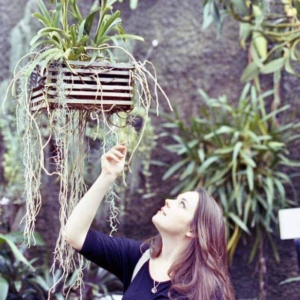
“I think that too often we overlook the role of native peoples in managing natural landscapes and wild animals. Indigenous knowledge and ways of knowing should be included in our curriculums when available and appropriate. Referring to this musk oxen in the same way as the people who cohabit their environment is just one small way to include the voices of, and honor native peoples.” – Natalie Buchholz, Graduate Degree Program in Ecology
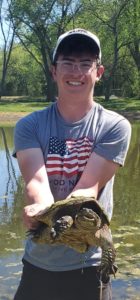
“The musk ox once ranged widely throughout the subpolar North; from Greenland to Siberia, from Ontario to the Arctic circle. By the early 1900s, it was restricted only to a few Canadian herds. How? Industrial hunting brought about by European settlers ensured a speedy demise for the noble animals, replacing the sustainable indigenous management of years prior. Slowly, the population has begun to recover. But we can do nothing to erase the damage already done; to the musk ox, and to the Inuit, who called them Umingmaq (‘the bearded one’). It is my wish that we call this stuffed individual Umi, as a reminder of the Inuit and indigenous peoples everywhere. Allow this musk ox to inspire a future guided by the principles of the past; one based in sustainability and conservation, environmental appreciation, and social justice for those peoples who once called these lands home.” – Gunnar Tribelhorn, junior conservation biology major
Runners Up
Although there could ultimately only be one name for the musk ox, there were several natural resources-inspired names that were submitted that are worth sharing. Here are their stories:
Indi
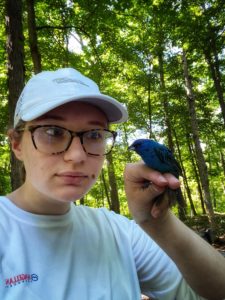 “I took a field ecology class during summer school, where, early in the morning, we would go out to a conservation area in central Missouri, set up mist nets, and band the birds we caught. In addition to gathering data for the MAPS Monitoring Avian Productivity and Survivorship program, the class was designed to get the students to interact directly with nature and gain a greater appreciation for natural resources, research, and conservation. The first bird I ever held was an Indigo Bunting, hence the nickname Indi. I still get emotional about the experience of *feeling* firsthand that life is both hearty and enduring, but also beautifully fragile and worth protecting. I’ve been interested in wildlife and the environment for many years, but that class was the first major catalyst that drove me to pursue a higher education in conservation; a drive that has led me to CSU’s Warner College.” – Hannah Cantin, student
“I took a field ecology class during summer school, where, early in the morning, we would go out to a conservation area in central Missouri, set up mist nets, and band the birds we caught. In addition to gathering data for the MAPS Monitoring Avian Productivity and Survivorship program, the class was designed to get the students to interact directly with nature and gain a greater appreciation for natural resources, research, and conservation. The first bird I ever held was an Indigo Bunting, hence the nickname Indi. I still get emotional about the experience of *feeling* firsthand that life is both hearty and enduring, but also beautifully fragile and worth protecting. I’ve been interested in wildlife and the environment for many years, but that class was the first major catalyst that drove me to pursue a higher education in conservation; a drive that has led me to CSU’s Warner College.” – Hannah Cantin, student
Thunder
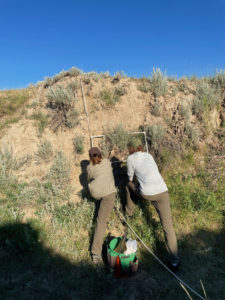 “I chose the name Thunder because of my research experience last year in Thunder Basin Grassland. Thunder feels like a powerful name that encompasses both nature and strength. Though the habitat of musk ox is arctic tundra, and not grasslands, I feel as though musk oxen could be described as thunderous creatures.” – Paige Lewis, alumna
“I chose the name Thunder because of my research experience last year in Thunder Basin Grassland. Thunder feels like a powerful name that encompasses both nature and strength. Though the habitat of musk ox is arctic tundra, and not grasslands, I feel as though musk oxen could be described as thunderous creatures.” – Paige Lewis, alumna
Max
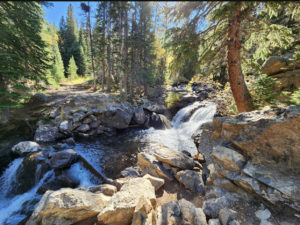 “Maxwell comes from the first hike I ever did with some fellow Warner students my first year at CSU, which was Maxwell Falls near Evergreen, CO. Part of what I loved so much about being part of Warner was the passion shared across all facets of the college not only for natural resource research but also outdoor recreation.” – Collin Binkley, alumnus
“Maxwell comes from the first hike I ever did with some fellow Warner students my first year at CSU, which was Maxwell Falls near Evergreen, CO. Part of what I loved so much about being part of Warner was the passion shared across all facets of the college not only for natural resource research but also outdoor recreation.” – Collin Binkley, alumnus
Atigun
 “In 2019 I had the chance to spend the summer backpacking in northern Alaska (where we did get to see a musk ox in the wild). We started our trip walking from the Dalton Highway to Atigun Gorge along the Atigun River. This trip really fueled my passion for the environment, and both of the leaders of this trip had gone to CSU. They not only encouraged me to pursue my passion in natural resources, but they told me I should look into the programs the Warner College at CSU had. I did, and that’s how I ended up in the Warner College of Natural Resources!” – Sarah Williams, student
“In 2019 I had the chance to spend the summer backpacking in northern Alaska (where we did get to see a musk ox in the wild). We started our trip walking from the Dalton Highway to Atigun Gorge along the Atigun River. This trip really fueled my passion for the environment, and both of the leaders of this trip had gone to CSU. They not only encouraged me to pursue my passion in natural resources, but they told me I should look into the programs the Warner College at CSU had. I did, and that’s how I ended up in the Warner College of Natural Resources!” – Sarah Williams, student
Arctic
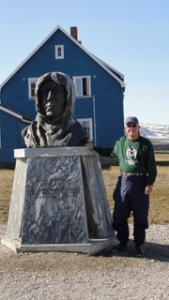 “The name Arctic represents and honors one of the Earth’s greatest ecosystems. Musk ox represent pure wilderness and the spirit of the Arctic. Musk ox are an ongoing conservation success story after being extirpated from most of their former range. Musk ox have helped sustain Indigenous Peoples for thousands of years. Warner College of Natural Resources is a continuing important part of conservation of the Arctic and the musk ox.” – Jack Capp, 2019 Warner Distinguished Alumnus
“The name Arctic represents and honors one of the Earth’s greatest ecosystems. Musk ox represent pure wilderness and the spirit of the Arctic. Musk ox are an ongoing conservation success story after being extirpated from most of their former range. Musk ox have helped sustain Indigenous Peoples for thousands of years. Warner College of Natural Resources is a continuing important part of conservation of the Arctic and the musk ox.” – Jack Capp, 2019 Warner Distinguished Alumnus
Musk Oxen: Climate and Conservation Stories
The musk ox naming competition was a fun way to involve the Warner community, but musk oxen represent significant climate and conservation stories. Joel Berger, the Barbara Anthony Cox Chair of Wildlife Conservation in the Department of Fish, Wildlife and Conservation Biology, has spent years researching musk oxen. Read more about Berger’s work and learn more about this amazing species.
